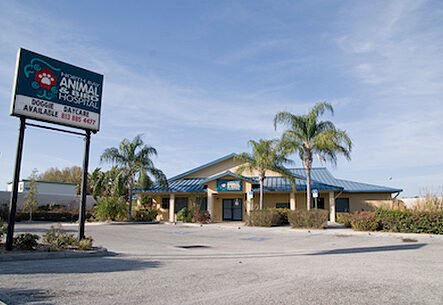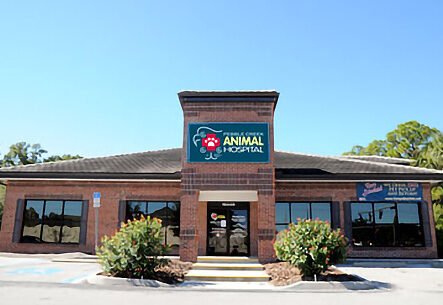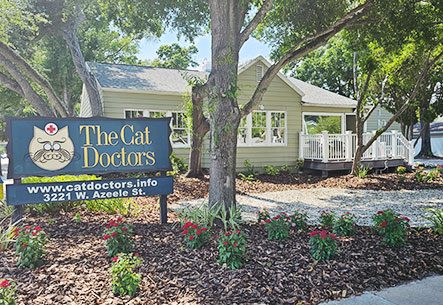Canaries
What to expect from your canary
Canaries are tidy, nondestructive and easy to care for, but they do not like to be handled. They are appreciated most for their pleasant, melodious song. All male canaries sing, starting as early as three months of age. If a male canary becomes ill, it may stop singing until the following spring even though the initial illness has resolved.
Canaries are not social birds. One bird kept as a single pet will be content. Males must be housed separately from other males to prevent fighting but may be kept within visual or auditory range to stimulate singing. Group housing with mixed ages and both sexes will work only if the cage has enough perches and many feeding stations.
Vital statistics
- Body length: 4-7 inches (10-18 cm)
- Body weight: 12-30 grams
- Age of sexual maturity: 5 months
- Life span: 20-25 years
Are Canaries tame?
Canaries are considered “skittish” and will fly away when approached. If capture of a canary is necessary, one useful approach is to remove all perches and turn off the lights before reaching into the enclosure. Handling of canaries should be minimized.
What do Canaries do all day?
Canaries spend a great deal of their time eating and flying from perch to perch. Fresh food and water must be available at all times, and multiple, small diameter branches are important accessories in the enclosure.
Is your Canary a male or a female?
Appearance alone does not indicate if your canary is a male or a female; however, behavior during the breeding season makes a clear distinction. Males are particularly vocal at this time, and the vent area in the male becomes enlarged and prominent.
Can you breed Canaries at home?
Canaries are relatively easy to breed in captivity if they are healthy adults and if they have access to an acceptable partner, abundant food and water, and the presence of a nest and nesting materials. A lengthening photoperiod is the primary stimulant to breed, whether natural or artificially produced. To prevent potential injury to the female, the pair should not be housed together until both are in breeding condition. The hen may lay 3-5 eggs, which she incubates for approximately 14 days before hatching. The chicks are featherless when they hatch and are ready to leave the nest in 11-17 days. Canaries are raised by both parents. When the chick first starts to get pin feathers, a closed band is slipped over the toes onto the leg for permanent identification. Once the bones harden, this can no longer be done.
How can you keep your canary beautiful?
Once a year at the end of the breeding season, canaries replace all their plumage. During this time the diet should be supplemented with high protein foods, such as commercial “egg food,” mashed hard-cooked egg, finely chopped chicken or insects (either fresh or commercially available powdered insects usually marketed for finches). Feather color in “red factor” and “new color” canaries requires dietary sources of carotenoid, which is found in commercial diets that contain spirulina or in plant sources such as grated carrots, sweet potatoes and dark green leafy vegetables.
If there is a continuous source of stress in the canary’s life, such as fear, cagemate competition, infection or poor cage design, feathers will not molt properly but instead will be shed over the entire year.
How to identify your bird
One method used to permanently identify your canary in case of loss or escape is for your avian veterinarian to inject a custom microchip under the skin. Although individually numbered leg bands or rings may be applied, this method is unreliable and may result in potential damage to the bird.
Why the wings should be clipped
Canaries that are allowed unrestricted freedom in the home can encounter numerous physical dangers or toxins; therefore, wing clipping is recommended. The goal of clipping the wings is not to make the bird incapable of flight, but to prevent it from developing rapid and sustained flight and to prevent escape. Additional trimming may be required 8-12 weeks after the start of a molt cycle.
How to keep your canary healthy, happy and safe!
- Quarantine, test and treat new birds for potential diseases.
- Feed a fresh, high quality, toxin-free diet formulated specifically for canaries.
- Alternatively, feed a variety of fresh, pesticide-free seeds suitable for canaries. This diet requires supplementation.
- Vitamin/mineral supplements must be applied to moist food, not to seeds or placed in the water.
- Feed a high protein “egg food” during reproduction and molting.
- Provide clean, fresh, uncontaminated water daily for drinking and bathing.
- Keep nails trimmed.
Housing for a single pet canary should:
- be indoors.
- be at least 10” x 10” x 18” (25 x 25 x 45 cm) long.
- be clean, secure, safe and easy to service.
- be constructed of durable, nontoxic material (avoid zinc).
- contain multiple perches of clean, nontoxic, pesticide-free tree branches.
- be protected by mosquito screening if placed outdoors.
- provide a light cycle that follows natural daylight: decreased hours in winter, increased length in summer. Automatic timers are helpful.
- avoid having perches located directly over food containers.
- be lined with newspaper, butcher paper or plain brown paper.
Canaries are very curious and will investigate anything new in their environment. That is why it is important to prevent their access to:
- sandpaper-covered perches
- mosquitoes
- overheated nonstick-coated cookware
- fibrous nesting material or fine thread in nest box
- tobacco and cigarette smoke
- pesticides and other toxic fumes
- toxic houseplants
- chocolate, avocado, salt, alcohol
- dogs, cats, ferrets, free-ranging birds and young children
- cedar, redwood and pressure-treated wood shavings
- sources of lead or zinc
- plug-in air fresheners
- heavily-scented candles
What your veterinarian looks for in a healthy Canary:
- Dry, open nares
- Clear, bright eyes (no discharge)
- Smooth beak
- Alert, erect posture
- Body free of lumps and bumps
- Smooth, bright feathers without color breaks, transparency or ragged edges
- Even, reptilian pattern on the feet, and nails of appropriate length
Most common disorders of Canaries:
- Feather cysts
- Baldness
- Other feather abnormalities
- Obesity, fatty tumors
- Mites (air sac, trachea, tasselfoot, scaly face)
- Canary poxvirus
- Egg binding
- Cataracts
- Internal parasites
- Bacterial diseases
- Constricted feet and digits
- Damaged nails and beak
- Leg fractures
- Fungal infections
- Acute dyspnea (inhaled seed)
Many common disease conditions in canaries are the result of malnutrition. Visiting your avian veterinarian for routine health checks will help prevent many diseases and support you in having a long, satisfying relationship with your canary.
Background information
Canaries are native to the Canary Islands, Madeira and the Azores, and have been maintained as pets in Europe since the 16th century. Because canaries breed intensively in captivity, pairings over this time period have resulted in many distinct varieties and mutations. These mutations bear little resemblance to their green, free-ranging ancestors. Depending on the qualities desired, canaries may be bred for color variations, size and shape characteristics, feather traits or singing ability. The Norwich and Yorkshire are large, robust birds, while the Glouster, a miniature breed, is known for the cap of feathers on its head. American Singers and Rollers are bred especially for their vocal ability. Because today’s canaries come from a small gene pool, mutations may be associated with genetic abnormalities and reduced life span. Birds with undesirable genetic traits should not be bred.
Courtesy of Zoological Education Network
Tampa, FL 33615 (View map)
Tampa, FL 33647 (View map)
Tampa, FL 33617 (View map)
Tampa, FL 33647 (View map)








